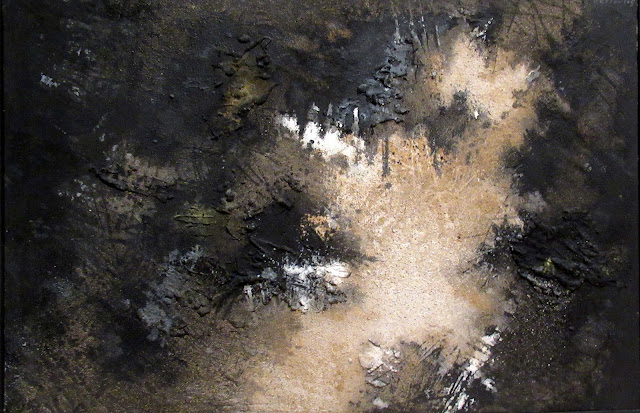Action, Gesture and Paint: Women Artists and Global Abstraction, 1940-70 at the Whitechapel Gallery.
An exhibition celebrating the women artists of mid-20th century gestural abstraction, showing how they shaped modern painting. The story of abstract art took a radical turn in the 1940s. Fusing bodily, gestural and emotive expression with colour, mark-making and the materiality of paint, this new movement was termed (in the USA) as Abstract Expressionism. It is often thought to have been centred in New York, where it was defined mainly by the work of white male artists. However, this new style of painting was a global phenomenon, shaped as much by local cultural and political context as by inernational exchange and dialogue.
The contributions of women have long been marginalised in modern art. The paintings presented here demonstrate how women across the world were fundamental in evolving the story of abstraction, incorporating experiences of turbulent social change into their work and promoting freedom of expression. Their art was made in a period of great historical shifts: the aftermath of WWII, global industrialisation, the rise of civil rights and post-colonial movements and a 'cold war' - marked by the threat of nuclear extinction - between capitalist democracies and communist states. Against this backdrop, the USA promoted abstract art as a form of western propaganda, to counter the influence of communism.
The exhibiton explores how artists made the canvas an arena for experimentation and personal expression through form and colour. It focuses on five themes: paint as material and process; symbolic languages drawn from myth and ritual; abstraction as an expression of the self; painting as movement and dance; and the canvas as environment.
The exhibition was divided into five sectons and I have replicated this with my posts. There are five posts which mirror the sections of the exhibitions, each with the same introduction.
Section 3: Being, Expression, Empathy.
The ruinous violence and displacements of WWII left a deep wound in the cultural psyche of the 1950s. It was in this era that existentialism, phenomenology and nihilism emerged as dominant themes in philosophy, themes that also underlie the paintings in this section. We can see the manifestations of trauma, feelings of emptiness or a brooding anxiety about a future 'defended' by nuclear weapons through a dark palette, chaotic fragmentation and congested, overwhelming compositions. To break with the past and generate a new creativity, artists also embraced destruction in art with the dissolution of form and physical attacks on the canvas. These artists are investigating the very nature of existence, triggering non-linguistic, empathetic responses in the viewer.
Juana Frances, Spain, No. 8, 1958, (mixed media on canvas)
During the 1950s Frances embraced Art Informel, which led her to found the El Paso group, along with other artists, in 1957. This group represented the culmination of Abstract Expressionism in Spain and became a definitive influence on post-war Spanish art. Frances' paintings employed a muted monochromatic palette with the paint scraped, dripped and scratched onto the canvas, sometimes adding materials such as sand or earth.
Martha Edelheit, USA/Sweden, Sacrificial Portrait, 1958, (oil, wood, metal and canvas)
'It didn't really occur to me that I could be an artist. All the artists in the museums were men', said Edelheit, an American artist who now lives and works in Sweden. She is known as a pioneering feminist artist, whose work addresses women's desires, the body, and skin as a canvas. Combining a variety of mediums, including painting, sculpture, film and performance, Edelheit's art challenges social expectations of women, formalist paradigms and traditional notions of painting.
Remington was part of the San Fracisco's Beat scene in the 1950s and in 1954 was one of six painters and poets, and the only woman, to found the legendary Six Gallery in San Francisco.
Born Corinne West, in the mid-1930s, West, like her contemporaries Lee Krasner and George (Grace) Hartigan, adopted a masculine name. She sought respect based on the merit of her work, free from the bias of sex.







No comments:
Post a Comment